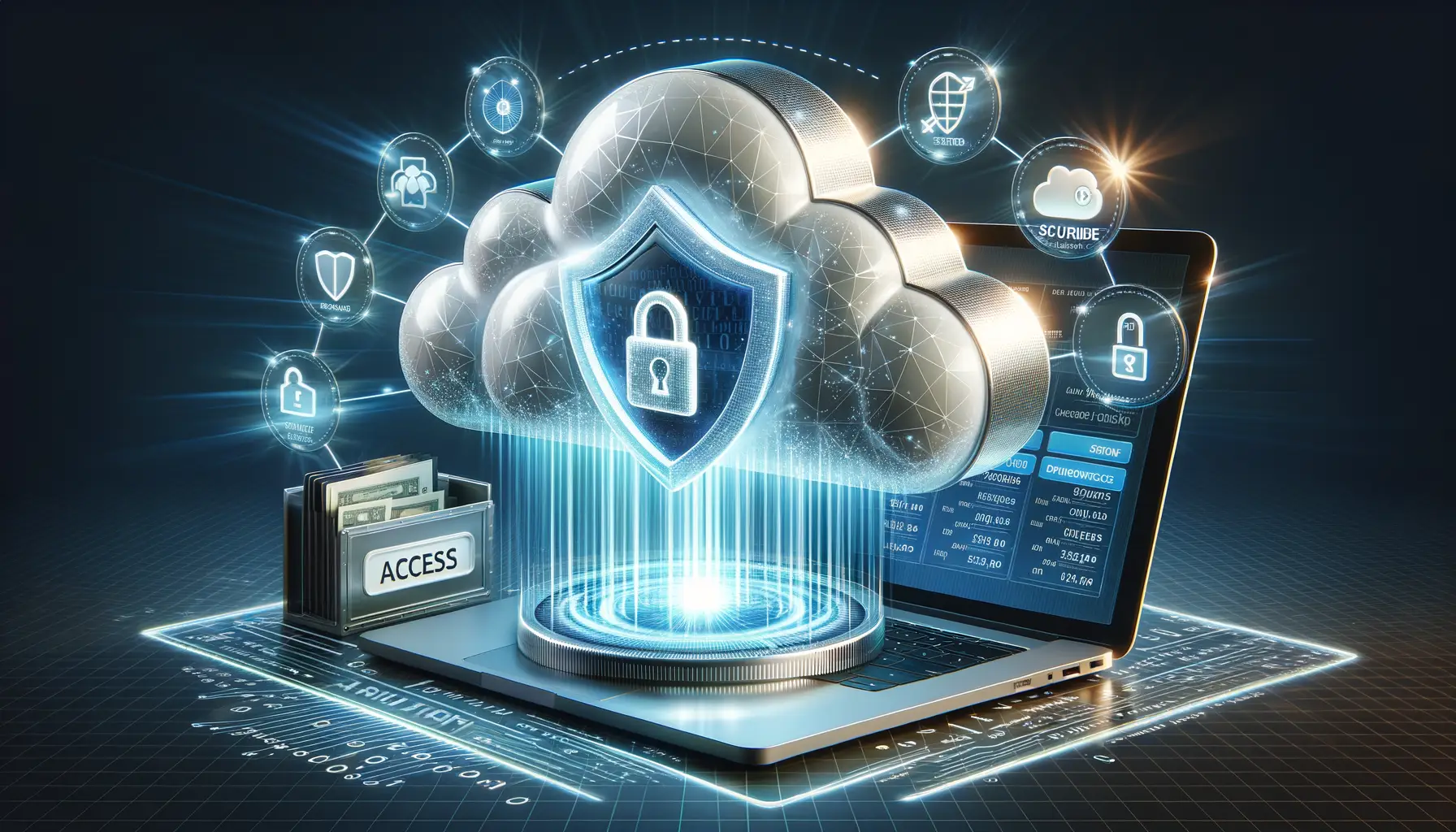Understanding the Importance of Cloud Security for Financial Data
Why Cloud Security Matters More Than You Think
Picture this: your financial data, from credit card transactions to payroll details, floating in the digital ether. It’s convenient, yes—but without proper security, it’s like leaving a vault unlocked in the middle of a bustling city. Whether you’re a small business owner managing taxes or an individual tracking investments, neglecting cloud security is like betting your peace of mind on a coin toss.
The stakes are simply too high. Financial records are treasure troves for cybercriminals. A single breach could open the floodgates to identity theft, fraud, or even crippling fines if you’re handling sensitive client data. But here’s the kicker: it’s not just hackers you need to worry about. Data loss from accidental deletion or software glitches can also wreak havoc on your financial stability.
So why play with fire? Strong cloud security ensures not only protection but also continuity. With secure backups, encrypted files, and controlled access, you can rest easy knowing your precious data is under lock and key—even if the “vault” lives in cyberspace.
What Strong Cloud Protection Brings to the Table
What does robust cloud security really offer? Here’s a snapshot:
- Data encryption: Turning your financial records into uncrackable codes, making them useless to intruders.
- Access control: Limiting who can step into your digital vault—even within your team.
- Seamless disaster recovery: Instantly retrieving files in case of technical hiccups or natural disasters.
At the end of the day, securing your cloud-based finances isn’t about paranoia—it’s about smart, proactive protection. Think of it as locking the door before you go to bed. Logical, right? And absolutely non-negotiable.
Common Cyber Threats Targeting Cloud Financial Records

Cyber Dangers Lurking in the Shadows of Your Cloud
Your cloud-based financial records may feel safe, tucked away in a digital vault, but they’re often prime targets for sly, modern-day cyber thieves. These attackers are not amateurs, and their tactics can range from sneaky to downright sophisticated. Here are some dangers that might already be circling:
- Phishing Scams: Imagine an email disguised as your cloud service provider, urging you to “verify” account details. One wrong click, and your sensitive data is in enemy hands.
- Ransomware Attacks: Criminals encrypt your financial records, holding them hostage until you pay up. It’s like losing the keys to your own house.
These threats don’t just stop at stealing; they often aim to dismantle trust and disrupt operations.
Inside Jobs and Misconfigurations: The Human Factor
Not all risks come from faceless hackers. A trusted employee with malicious intent or careless handling of access credentials can wreak havoc. Worse, a simple cloud misconfiguration—like accidentally leaving your storage bucket wide open—can expose data to prying eyes without you even noticing.
Your financial data deserves better than gambling on luck. Avoid underestimating these common threats, or the next data breach could have your name written all over it.
Best Practices for Protecting Financial Data in the Cloud

Fortifying Your Virtual Finance Vault
Keeping your financial data safe in the cloud is like locking up gold in a high-security vault—but even the highest walls need some reinforcements. Cybercriminals are always innovating, so your defense has to be smarter, faster, and more efficient. Start by making sure access to your cloud feels like cracking a heist-proof safe. Use unique, complex passwords—and skip the ones you can “sort of” remember. A password manager can be your ultimate sidekick here.
Another golden rule? Limit who gets the keys to the kingdom. Review user permissions regularly and remove access from inactive accounts or former employees. Why let an unguarded door beckon trouble?
- Activate alerts for unusual login attempts—we’re talking locations or devices that seem sketchy.
- Always set up session timeouts to kick out idle users automatically.
Layering Your Defenses with Smart Tools
Single-layer defense is yesterday’s news. Think in layers similar to winter dressing—it’s all about depth! Enable firewalls to block suspicious traffic, implement endpoint protection, and invest in high-grade antivirus tools. Regular backups aren’t just for peace of mind—they’re insurance against the worst. Imagine being able to restore your data like rewinding a movie after an accidental deletion or ransomware attack.
Pro tip: Regularly test your backup recovery process. It’s not enough to save data; you need to know how to retrieve it when the stakes are high.
The Role of Encryption and Multi-Factor Authentication in Securing Data

Why Encryption is Your Data’s Secret Keeper
Imagine your financial data wrapped in a virtual lockbox that only you hold the key to. That’s what encryption does—it transforms sensitive information into indecipherable code that even the craftiest cybercriminals can’t break through without the right decryption key. It’s like turning your cloud-based financial records into a language so alien, only your systems can translate it.
Encryption works its magic by securing data both during storage and transmission. Think about when you upload budget reports or access invoices online. Without encryption? That data becomes vulnerable, like sending a postcard in the mail instead of a sealed envelope. With it? Your “postcard” is locked in an uncrackable vault.
Pro tip: Look for cloud services offering end-to-end encryption—it fortifies every step of the journey.
Adding Multi-Factor Authentication: Because One Password Isn’t Enough
Let’s face it—relying on a single password to safeguard your finances is like locking your front door and leaving the windows wide open. Enter Multi-Factor Authentication (MFA), your digital bouncer.
MFA combines:
- Something you know (like a strong, unique password).
- Something you have (a mobile device or token).
- Something you are (fingerprint or facial recognition).
This layered approach adds friction for hackers but keeps your data easily accessible to you. Picture getting a text to confirm a login attempt; it’s like a quick, reassuring nod from your security team. Hackers may crack passwords, but they’ll rethink their life choices when faced with MFA.
Monitoring and Updating Your Cloud Security Measures

Stay One Step Ahead with Proactive Security Checks
No matter how airtight your cloud security measures might seem today, cyber threats evolve faster than you can say “data breach.” Monitoring your systems isn’t just an IT chore—it’s like checking the locks on your house every night. You wouldn’t leave your front door open, so why let your guard down with your financial data?
Here’s where vigilance becomes your best ally. Regular security audits are a must; think of them as your financial data’s health check-ups. Is your software up-to-date? Are there signs of suspicious activity, like unexpected logins or file changes? Stay curious and dig deeper—cybercriminals thrive on complacency.
- Enable automatic updates for all cloud-based tools to patch vulnerabilities before hackers can exploit them.
- Set alerts for unusual behaviors, like repeated failed login attempts or access from unknown locations.
- Review your user permissions regularly. Who has access? Do they still need it?
Adaptability: Your Secret Weapon Against Cyber Threats
Here’s the truth: cloud security isn’t a “set it and forget it” kind of deal. Change is inevitable. What worked six months ago might already be obsolete. Take advantage of evolving tools, like AI-powered threat detection or updated firewalls. And don’t be afraid to pivot! Your willingness to adapt could mean the difference between safe financial records and a devastating breach.
Above all, stay informed. Follow cybersecurity trends, attend webinars, or join forums. Being proactive isn’t paranoia—it’s power.

